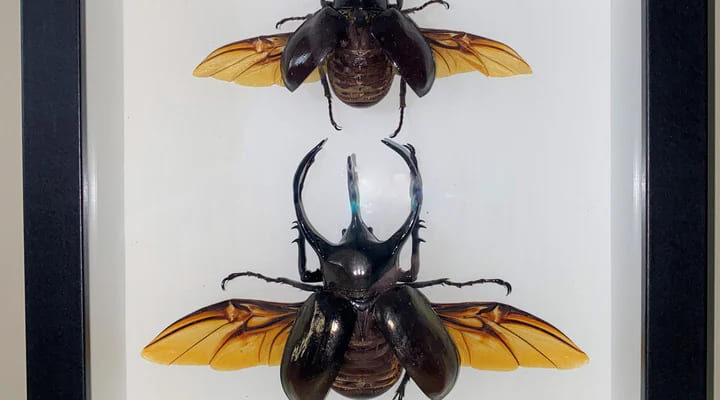
In the realm of insects, few creatures captivate the imagination quite like the rhinoceros beetle. Known for its formidable appearance and impressive strength, this beetle holds a special place in the pantheon of nature‘s wonders. Join us on a journey into the world of the rhino beetle, exploring its biology, behavior, and ecological significance.
Introduction to the Rhino Beetle
The rhinoceros beetle, scientifically classified under the subfamily Dynastinae, is a group of beetles known for their distinctively shaped horns and robust bodies. These beetles are part of the scarab beetle family (Scarabaeidae) and are found in various parts of the world, predominantly in tropical regions.
Morphology and Physical Characteristics
One of the most striking features of the rhino beetle is its horn, which varies in size and shape depending on the species and gender. Male rhino beetles typically have larger horns, which they use during battles with other males over territory and mates. These battles can be intense, with the beetles locking horns and using their impressive strength to topple opponents.
Beyond their horns, rhino beetles are characterized by their robust bodies and formidable appearance. Their exoskeletons are often adorned with intricate patterns and colors, ranging from shiny black to shades of brown and green, providing them with excellent camouflage in their natural habitats.
Habitat and Distribution
Rhino beetles are primarily found in tropical and subtropical regions worldwide, with some species also inhabiting temperate climates. They are commonly found in forests, grasslands, and agricultural areas where they feed on decaying plant matter and tree sap. These beetles play a crucial role in ecosystems by aiding in the decomposition process and contributing to nutrient cycling.
Life Cycle and Behavior
The life cycle of a rhino beetle typically begins with eggs laid in decaying wood or soil by adult females. Larvae, often referred to as grubs, hatch from these eggs and undergo several stages of growth, feeding voraciously on organic matter. This larval stage can last from several months to years, depending on environmental conditions and species.
Once fully developed, the larvae pupate underground or within their substrate, transforming into adult beetles. The emergence of adult rhino beetles marks the beginning of their brief but impactful adult stage, during which they focus on mating and dispersing.
Ecological Importance
Rhino beetles play a vital ecological role as decomposers. By feeding on decaying organic material, they accelerate the breakdown process, releasing essential nutrients back into the soil. This nutrient cycling is crucial for maintaining soil fertility and supporting the growth of plants in their habitats.
Furthermore, rhino beetles serve as prey for various predators, contributing to the intricate web of interactions within their ecosystems. Their presence and activities influence the diversity and dynamics of other organisms, making them an integral part of their respective ecosystems.
Cultural Significance and Human Interaction
Throughout history, rhino beetles have fascinated and inspired human cultures around the world. In some societies, these beetles are revered as symbols of strength and resilience, while in others, they are valued for their aesthetic appeal. In parts of Asia, particularly in Japan, rhino beetles are kept as pets and are even entered into competitive battles akin to sumo wrestling.
In agricultural contexts, certain species of rhino beetles can become pests, causing damage to crops and trees. Efforts to manage these pests often involve integrated pest management strategies that aim to minimize ecological disruption while protecting agricultural yields.
Conservation and Threats
Like many other insect species, rhino beetles face threats from habitat loss, climate change, and human activities. Deforestation and urbanization can disrupt their natural habitats, reducing their population sizes and restricting their ability to thrive. Conservation efforts aimed at preserving tropical forests and promoting sustainable land use practices are essential for protecting rhino beetles and their habitats.
Conclusion
In conclusion, the rhinoceros beetle stands out as a remarkable creature in the world of insects, admired for its strength, resilience, and ecological importance. From its distinctive horn and robust physique to its role in nutrient cycling and cultural significance, this beetle embodies the diversity and beauty of the natural world. As we continue to explore and appreciate these fascinating insects, it is crucial to recognize and support efforts aimed at conserving their habitats and ensuring their survival for future generations to marvel at.
Whether encountered in the depths of a tropical forest or admired in cultural contexts worldwide, the rhino beetle serves as a testament to the wonders of biodiversity and the intricate connections that sustain life on Earth.









